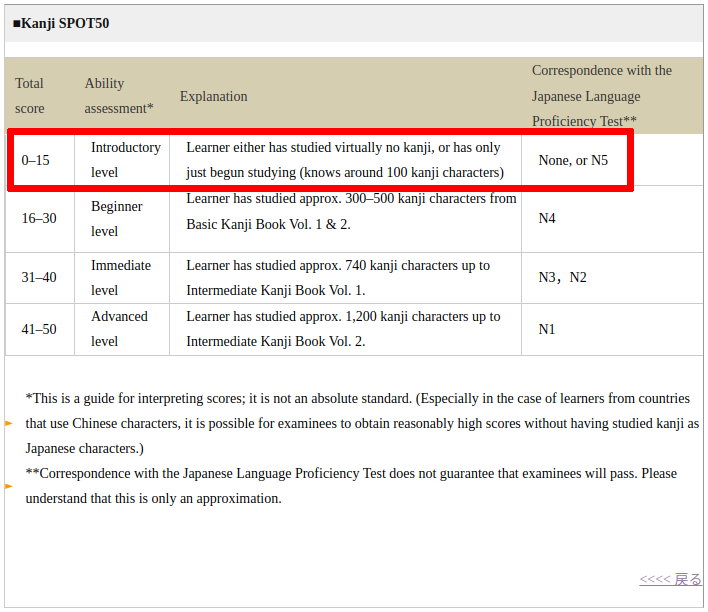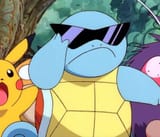Day 0 - How To Determine Your Japanese Proficiency Level
TL;DR: Take the Tsukuba Test-Battery of Japanese (TTBJ) SPOT90 + Grammar90 + Kanji SPOT50. It's free, online, and unproctored.

TL;DR: Take the Tsukuba Test-Battery of Japanese (TTBJ) SPOT90 + Grammar90 + Kanji SPOT50. It's free, online, and unproctored.
Dateline: August 30th, 2024
Post #0001
Hey! First official post of the blog. Here's a quick way to know if you're in the right place:
- Have you been stuck before when trying to learn a new language?
- Are you interested in learning Japanese (or other languages in general)?
- Do you want to accelerate your language learning with modern technologies? We'll investigate the following methods and others:
- Artificial Intelligence (AI) and Machine Learning (ML) practice partners
- Spaced Repetition methods (e.g. Anki)
- Remote one-on-one and cohort-based language classes
- Online language proficiency exams
- etc.
- Would you like to see progress updates of Japanese language learning as a benchmark to gauge your own language learning progress?
I'll share my experiences trying and/or failing with all of those techniques as I teach myself Japanese.
This first post will cover my previous experience learning Japanese and how to check your own Japanese proficiency level for free.
My Previous Experience with Japanese
While this blog will follow my progress learning Japanese, you should be aware that I'm not starting from absolute zero. For those of you who are starting from scratch, please don't be discouraged if I seem to be learning the basics faster than you, because my time spent studying the fundamental basics (Hiragana, Katakana, and the first 100-200 Kanji or so) will really be more of a "refresher" for me as I get back up to speed with my previous level of experience from many years ago.
Here's the outline of my previous experience trying to learn Japanese:
- Four "years" of classes in high school, in a traditional 1-to-20 style classroom with almost no individual speaking practice opportunities
- Classroom time consisted mostly of learning to write and memorize Hiragana and Katakana (the two Japanese syllabaries - they are not alphabets!) in the first "year" followed by Kanji (the Japanese logography) in the second half of the first "year" and all remaining "years"
- "Years" are intentionally in quotes because they don't accurately measure experience level in any language
- Hours may be a more useful metric for estimating experience – we will calculate those below, but ultimately it is the total number of words known and amount of spoken/written comprehension for daily use that counts when learning a language
- Grammar and speaking practice almost always occurred with other students as partners rather than the fluent teacher
- I believe this lack of speaking practice with fluent partners is the biggest weakness of traditional, classroom-based, one-to-many language instruction
- Exams were a combination of fill-in-the-blank, multiple choice, writing individual Kanji to match given English definitions, and occasionally writing out full sentences or paragraph answers in Japanese
- Classroom time consisted mostly of learning to write and memorize Hiragana and Katakana (the two Japanese syllabaries - they are not alphabets!) in the first "year" followed by Kanji (the Japanese logography) in the second half of the first "year" and all remaining "years"
- In total, I would estimate 5 days of class per week with 55 minutes per class and 36 school weeks per year, resulting in roughly the following total instructional hours:
- Over the course of 4 years, this would be roughly ~540 total instructional hours, however:
- This does not account for missed days, of which there were probably 5-10 each year
- This practice was almost entirely writing and listening with relatively little speaking
- Given the previous qualifications, I would heavily discount the ~540 total instructional hours by possibly as much as 80%:
- Let's estimate that I have closer to ~540 * 0.20 = 108 hours of experience, which is more believable given the proficiency exam scores that I share later on in this post
My Proficiency Test Results
To get a baseline on my current level of Japanese after many years of zero study or usage, I took 3 different types of exams:
Tsukuba Test-Battery of Japanese (TTBJ)
This exam was the most "official" of the three that I took. I recommend it to anyone trying to judge their baseline level of Japanese. The Tsukuba Test-Battery of Japanese (TTBJ) proficiency exams are entirely free, online, unproctored, and can be taken at any time.
I took their recommended exam sequence of SPOT90 + Grammar90 + Kanji SPOT50, which can be completed in roughly 30-60 minutes depending on your skill level. My ugly – no good – rotten – very bad – disgraceful results are shown below:


Turns out that when you don't study or practice speaking a language for many years, you fail the exam...
Based on the TTBJ score interpretation section of the TTBJ website, I am solidly below the N5 level of the Japanese Language Proficiency Test (JPLT), which is the lowest level possible with the least amount of language comprehension.



After that shameful display, let's see how the Hiragana and Katakana quizzes go...
Hiragana Quiz
I did much better on the hiragana quiz – scoring 97% – which you can find at https://www.lingual-ninja.com/hiragana-quiz if you'd like to try it yourself.
However I would slightly discount this score because it was a multiple choice quiz. There were several times when I did not immediately remember the correct sound matching a given hiragana character, however I was able to deduce the correct answer through a process of elimination.



For a better, more truly reflective result of your given skill level, you should try to find a fill-in-the-blank quiz that requires you to write in the matching romaji (Latin alphabet letters) of a given hiragana character, so that you can't use process-of-elimination to deduce the correct answer from multiple choices.
Katakana Quiz
I did moderately okay on the katakana quiz – scoring 73% – which you can find at https://www.lingual-ninja.com/katakana-quiz if you'd like to try it yourself.
Again I would discount this score because it was a multiple choice quiz.



Restating what I mentioned in the previous Hiragana Quiz section – for a better, more truly reflective result of your given skill level, you should try to find a fill-in-the-blank quiz that requires you to write in the matching romaji (Latin alphabet letters) of a given katakana character, so that you can't use process-of-elimination to deduce the correct answer from multiple choices.
Summary of Skill Level
It's pretty clear from the test results that I remember close to zero Japanese vocabulary, grammar, and kanji.
My memory of hiragana seems to be good enough, but katakana is lacking.
The plan moving forward is to first refresh my writing skills of hiragana and katakana until I can consistently score 100% on quizzes for both of them.
After that, I'll move on practicing Level 10 Kanji, which are the introductory 80 kanji taught to 1st grade students in Japan from the Kyoiku Kanji educational list.
At the same time, I'll try speaking and listening practice through the YourTeacher.ai app, which is an artificial intelligence conversation practice partner. When studying other languages (not Japanese), I frequently used conversational practice partners that I found through italki, but hiring skilled teachers through the italki app can get expensive quickly, so I'm going to try the AI practice partner first and see if it's good enough.
Regardless I will be providing updates on language learning progress, with tips and tricks along the way, and reviews of any tools that I use to enhance the learning experience.
See you around!

